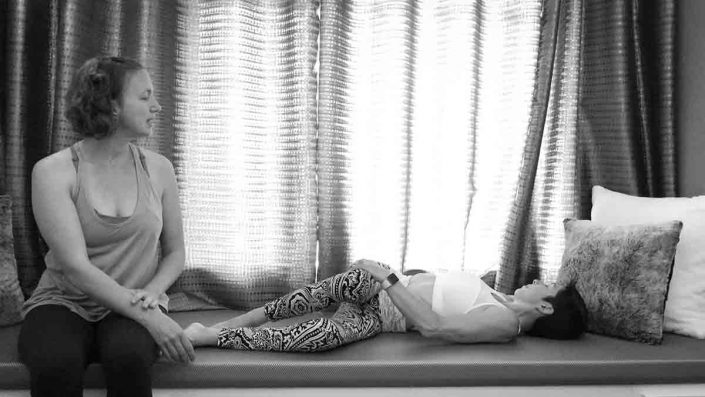Yoga
Yoga is the union between breathing, body and spirit. So to start with the basics, here are 3 breathing exercises. You can then apply the breathing with the movement. In more fluid sequences, try to make one breathing by movement. For more static movements, bring your attention to your breathing to help you relax and stay in the moment.
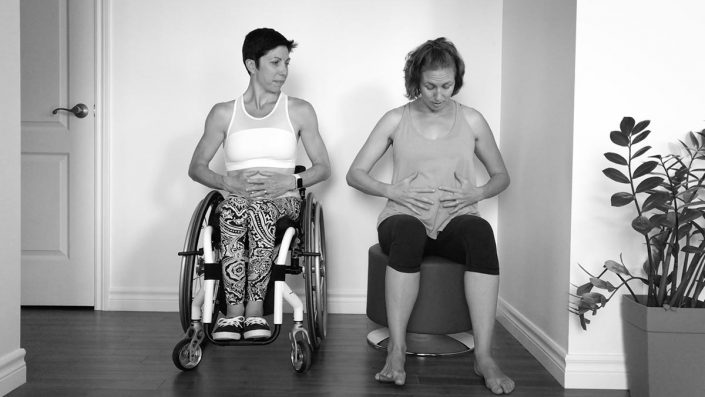
Belly breathing
• Objectives: Flexibility of the diaphragm, Breathing and relaxation, Control of its center
• Start: Place your hands on your stomach to feel the movement during breathing
• Movement: Inspire by swelling the belly. A slight swelling of the belly will occur under your hands .... without exaggeration. Upon expiration, the belly will return to its original place.
• Tip # 1 (not shown on the video): It is possible to put one hand on the belly and the other on the sternum to feel the movements of your ribcage. Thus, if you feel a movement with the inspiration under the hand that is on the sternum, it is a sign that the breath is not in the right place. In this case, focus to direct the breath further into the hand on the belly during the next breath.
• Tip # 2: No pressure, no obligation. Just breathing is a sign of a union between your body and your mind.
• 10 breaths
• Start: Place your hands on your stomach to feel the movement during breathing
• Movement: Inspire by swelling the belly. A slight swelling of the belly will occur under your hands .... without exaggeration. Upon expiration, the belly will return to its original place.
• Tip # 1 (not shown on the video): It is possible to put one hand on the belly and the other on the sternum to feel the movements of your ribcage. Thus, if you feel a movement with the inspiration under the hand that is on the sternum, it is a sign that the breath is not in the right place. In this case, focus to direct the breath further into the hand on the belly during the next breath.
• Tip # 2: No pressure, no obligation. Just breathing is a sign of a union between your body and your mind.
• 10 breaths
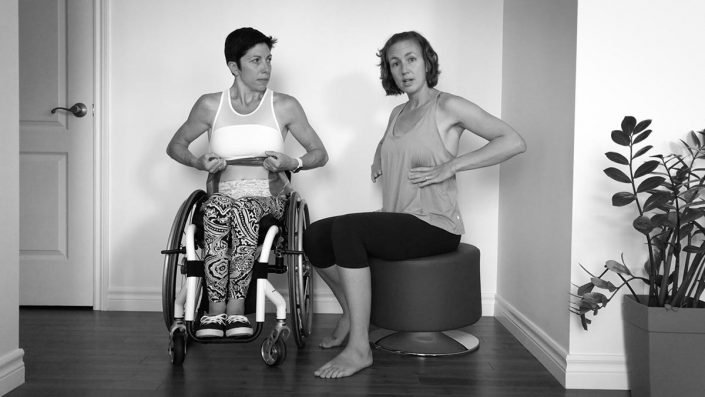
Rib cage breathing
• Objectives: Flexibility of the diaphragm and the intercostal muscles, Control of its center, Improve the mobility of the rib cage
• Start: As a sensory marker, place a rubber band around the waist at the lower ribs.
• Movement: Inhale concentrating to push on the elastic so that the rib cage opens in width. Upon exhalation, the rib cage will return to its usual shape.
• Tip # 1: As with breathing in the belly, the sternum should stay as low as possible at the inspiration. The shoulders and trapezius will certainly want to participate in the movement (error!). So, the first time, breathe in front of a mirror to observe the movements of the ribcage.
• Tip #2: If you do not have rubber bands, you can also use your hands to feel the movement of the ribs.
• 10 breaths
• Start: As a sensory marker, place a rubber band around the waist at the lower ribs.
• Movement: Inhale concentrating to push on the elastic so that the rib cage opens in width. Upon exhalation, the rib cage will return to its usual shape.
• Tip # 1: As with breathing in the belly, the sternum should stay as low as possible at the inspiration. The shoulders and trapezius will certainly want to participate in the movement (error!). So, the first time, breathe in front of a mirror to observe the movements of the ribcage.
• Tip #2: If you do not have rubber bands, you can also use your hands to feel the movement of the ribs.
• 10 breaths
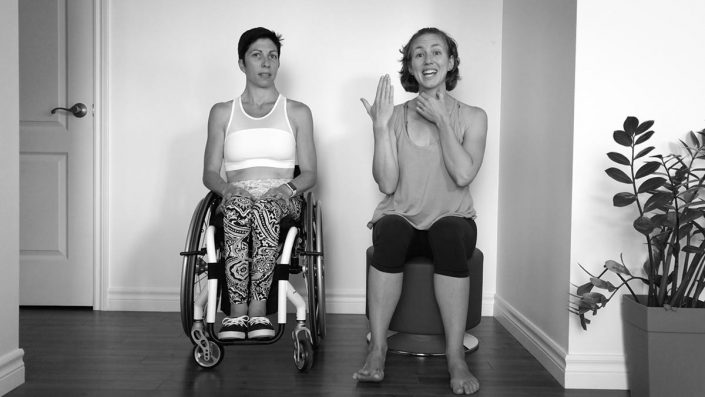
Ujjayi breathing
• Objectives: To focus more easily on breathing, control airflow to lengthen breaths, slow down the nervous system
• Movement: Inspire through the nose in 4 strokes. Keep the lungs full for 4 seconds, exhale 4 times again and keep the air empty for 4 seconds.
• Tip # 1: To produce the Ujjayi sound, we can imagine that we want to steam in the window with our mouth. A throat sound will be produced; it is the Ujjayi. For breathing Ujjayi, it's the same principle, but breathing through the nose.
• Tip # 2: Execute breathing in 3 beats if it's too long for your ability. Conversely, you can also do 5-6-7 times if your rib cage amplitude allows you.
• 10 breaths
• Movement: Inspire through the nose in 4 strokes. Keep the lungs full for 4 seconds, exhale 4 times again and keep the air empty for 4 seconds.
• Tip # 1: To produce the Ujjayi sound, we can imagine that we want to steam in the window with our mouth. A throat sound will be produced; it is the Ujjayi. For breathing Ujjayi, it's the same principle, but breathing through the nose.
• Tip # 2: Execute breathing in 3 beats if it's too long for your ability. Conversely, you can also do 5-6-7 times if your rib cage amplitude allows you.
• 10 breaths
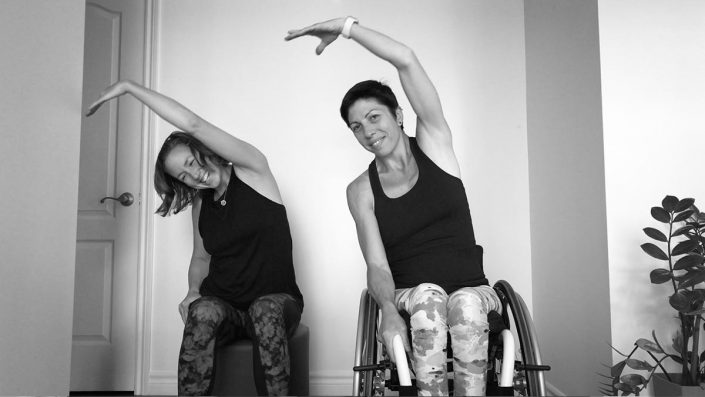
Spine movements
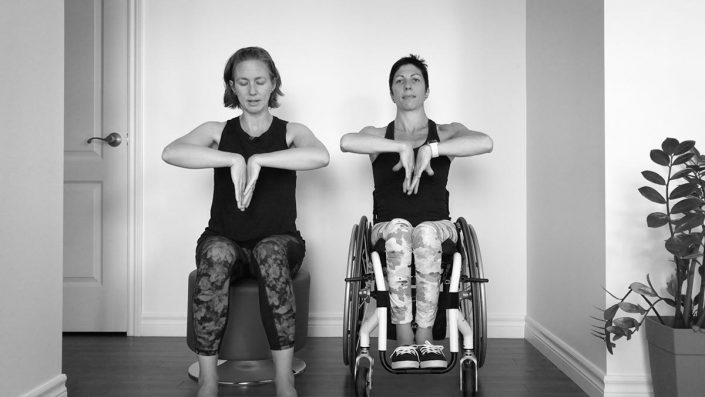
Hands movements
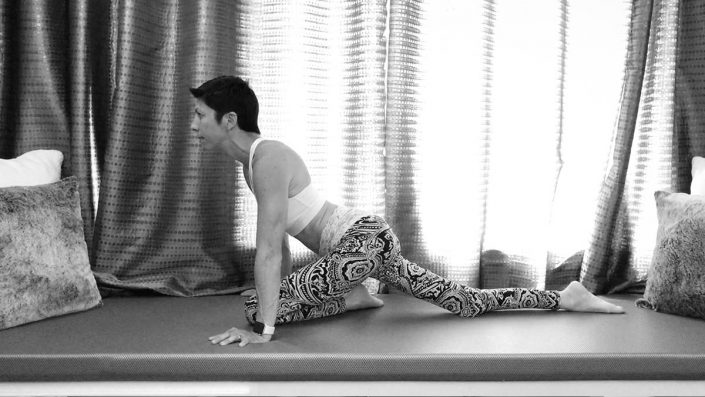
Pigeon pose
• Muscles stretched Left hip: Buttocks, adductor and hamstring
• Stretched muscles Right hip: Psoas-iliac, quadriceps and fascia-lata tensor
• Start: Turning on your stomach, bend the left knee and place one hand on each side of the knee. Let the right leg lie behind. Push with your hands into the ground until the elbows are fully extended.
• Stretching: Maintain stable position by breathing deeply for 6 to 8 breaths (30 to 45 seconds).
• Tip: A cushion can be placed under the left buttock to support the hip slightly during stretching. In this case, place the cushion under the buttocks before turning on the belly. (not shown on the video)
• Stretched muscles Right hip: Psoas-iliac, quadriceps and fascia-lata tensor
• Start: Turning on your stomach, bend the left knee and place one hand on each side of the knee. Let the right leg lie behind. Push with your hands into the ground until the elbows are fully extended.
• Stretching: Maintain stable position by breathing deeply for 6 to 8 breaths (30 to 45 seconds).
• Tip: A cushion can be placed under the left buttock to support the hip slightly during stretching. In this case, place the cushion under the buttocks before turning on the belly. (not shown on the video)
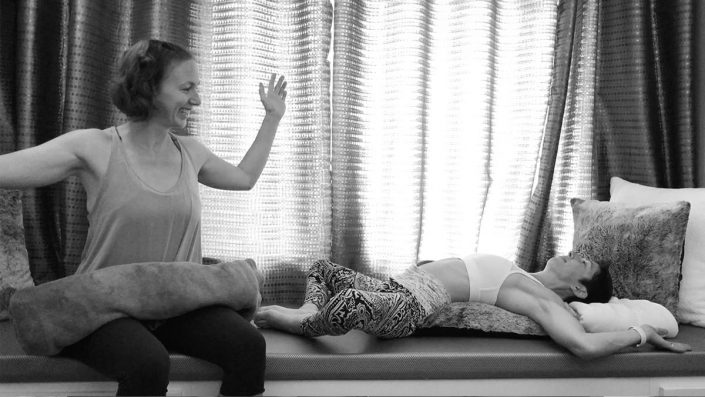
Chest opening
• Objectives: Opening of the heart, opening of the rib cage and shoulders
• Movement: Breathe with Ujjayi OR breathe normally. Concentrate on relaxing the pectoral muscles on expiration and open the heart to the sky. At each expiration, try to sink into the ground by the heaviness of your body.
• Tip: In case of discomfort, adopt the same opening posture, but in a semi-sitting position. Find the angle that allows you to relax tension and relax.
• Movement: Breathe with Ujjayi OR breathe normally. Concentrate on relaxing the pectoral muscles on expiration and open the heart to the sky. At each expiration, try to sink into the ground by the heaviness of your body.
• Tip: In case of discomfort, adopt the same opening posture, but in a semi-sitting position. Find the angle that allows you to relax tension and relax.
